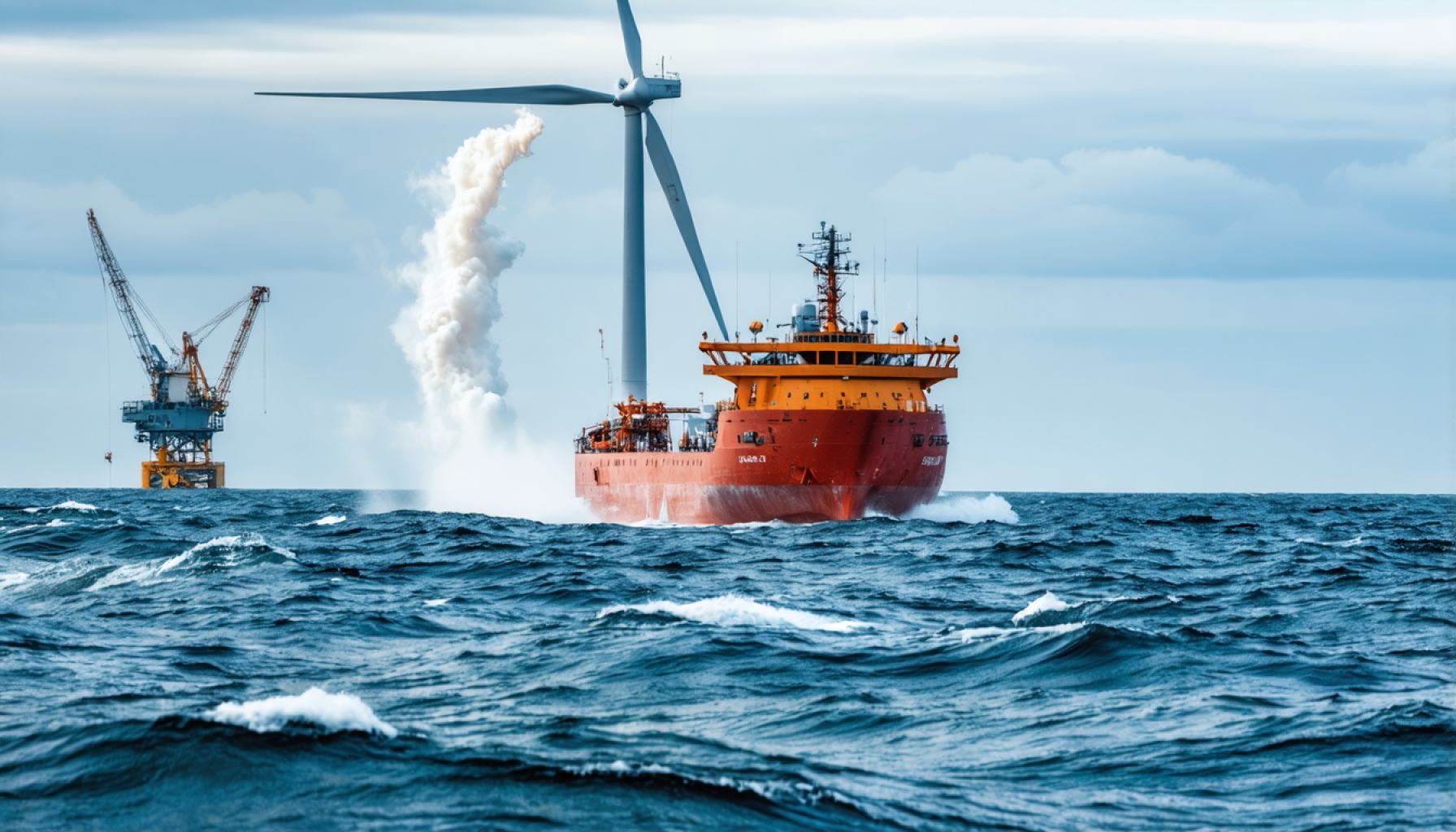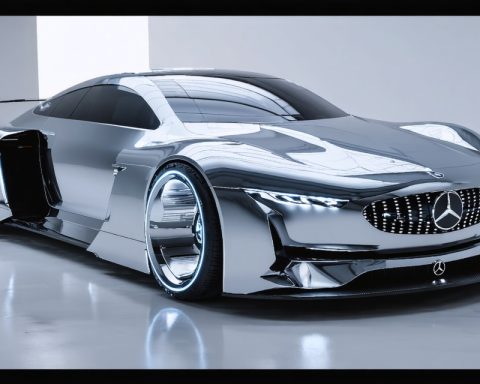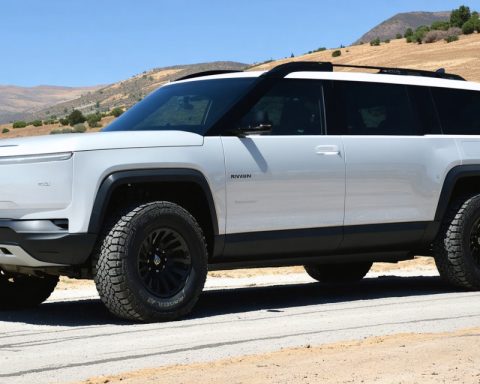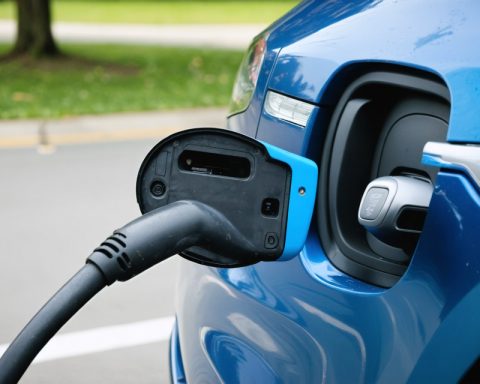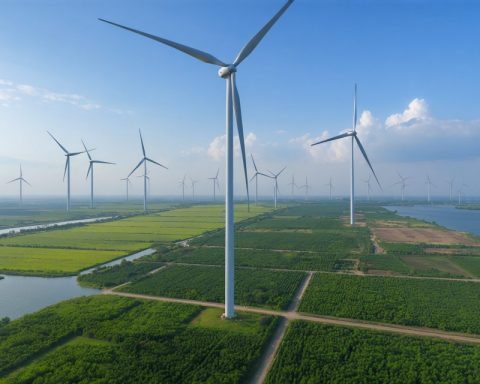- Equinor’s vessel, Nordnes, is part of an innovative project to install offshore wind turbines off the coast of Long Beach, aiming for renewable energy advancement.
- Plans include installing nearly 1,000-foot turbines, each stabilized by a strategic layering of rocks to resist ocean erosion and currents.
- The Long Island fishing community expresses concerns over ecological disruptions and increased risks for fishermen due to the rocky seabed.
- Equinor’s shift from concrete to monopile design for the turbine foundations has sparked debate among environmental groups, focusing on potential marine ecosystem impacts.
- The project highlights the need for balancing technological innovation with environmental stewardship to ensure sustainable progress.
Off the coast of Long Beach, a silent yet formidable operation unfolds. Guided by cutting-edge innovation and the promise of renewable energy, Equinor’s vessel, Nordnes, is poised to transform the seabed into a stronghold for offshore wind turbines. As it drops layers of rock around the planned 54 turbines and an offshore substation, Equinor embarks on a challenging journey that intertwines engineering prowess with ecological realities.
The expanse off Long Beach, roughly 15 miles from shore, is set to host nearly 1,000-foot wind turbines, each to be planted firmly into the ocean floor by a massive hammering process. To stabilize these giants against the whims of ocean currents and erosion, Equinor plans to encircle each foundation with a 66-foot radius of strategically placed rocks. This layered approach, beginning with smaller stones and culminating with larger ones, forms a crucial barrier against the relentless, eroding sea.
Yet, beneath the surface, concern simmers among the Long Island fishing community. The introduction of these rocky barriers ignites fears of disrupted ecosystems and new risks for fishermen. Bonnie Brady, who advocates for the Long Island Commercial Fishing Association, voices the unease felt by her community. The rocky seabed that supports these vast structures becomes a perilous zone for traditional trawling, where nets risk entanglement or damage from hefty stones.
In the realm of environmental advocacy, the conversation pivots on Equinor’s mid-project strategy shift. Initially planning to employ concrete foundations for the turbines, Equinor opted instead for cost-effective monopile design. This change, crucial yet contentious, drew scrutiny from major environmental defenders like the Natural Resources Defense Council and The Nature Conservancy. These groups, once supportive of offshore wind initiatives, now voice concerns over potential disturbances to marine ecosystems and the enduring welfare of New York’s marine life, including resident whale populations.
As Equinor advances, its course set towards renewable energy leadership, it must carefully balance the scales between technological ambition and the stewardship of marine environments. This project, emblematic of the world’s shift to cleaner energy, underscores a universal truth: the future of innovation must tread thoughtfully on the path laid by nature itself.
The story unfolding off Long Beach is one of pioneering courage and intricate complexity, a vivid reminder that even the quest for sustainability must consider the enduring balance between progress and preservation.
Discover the Hidden Challenges of Offshore Wind Energy: What Lies Beneath the Surface?
Navigating the Balancing Act: The Future of Offshore Wind Energy Off Long Beach
The ambitious offshore wind energy project led by Equinor off the coast of Long Beach seeks to set new standards in renewable energy. As the Nordnes vessel lays the groundwork for the massive wind turbines, a complex interplay of technological innovation and environmental stewardship is at the forefront. This venture not only promises a cleaner energy future but also highlights the intricate challenges faced by such pioneering initiatives.
How Offshore Wind Turbines Work
Offshore wind farms convert wind kinetic energy into electricity through towering turbines anchored to the seabed. Each turbine in this project will reach nearly 1,000 feet, harnessing stronger and more consistent winds found over open water compared to land-based sites. The electricity generated is transmitted through underwater cables to the mainland.
Key Processes and Innovations
1. Rock Layering for Stability: The innovative technique involves creating concentric circles of rocks of varying sizes to reinforce the seabed around the turbine foundations. This approach mitigates erosion and provides stability against strong ocean currents.
2. Monopile Design: Equinor’s switch to monopile foundations, instead of the originally planned concrete bases, exemplifies cost-effective engineering. Monopiles are single, large-diameter steel tubes driven into the seabed, offering a streamlined installation process.
Pros and Cons Overview
Pros:
– Renewable Energy Source: Offshore wind farms contribute significantly to reducing carbon emissions compared to fossil fuels.
– Potential Job Creation: The construction and maintenance of wind farms can create jobs in local communities.
Cons:
– Environmental Concerns: Potential disruption to marine ecosystems, including habitat disturbances for marine life.
– Fishing Industry Impact: Risks to traditional fishing practices, with concerns over net entanglement in rocky seabeds.
Controversies & Limitations
The project’s environmental implications are receiving scrutiny from conservation groups concerned about ecological impacts. The Long Island fishing community fears the loss of traditional fishing grounds due to the new seabed structures. This tension underscores the essential balance needed between ecological preservation and advancing renewable energy.
Real-World Use Cases
Offshore wind farms are increasingly recognized as a vital component of global renewable energy strategies. Countries like Denmark, the UK, and Germany have successfully integrated offshore wind into their energy grids, providing lessons and insights for new projects.
Market Forecasts & Industry Trends
The offshore wind market is rapidly expanding, with predictions pointing toward significant growth in the upcoming years. Analysts expect substantial investments in technology to improve efficiency and lower costs, making offshore wind an attractive option for large-scale renewable energy deployment.
Recommendations for Stakeholders
– Community Engagement: Engaging with local communities, especially the fishing industry, can address concerns and foster support.
– Environmental Monitoring Programs: Implement ongoing studies to observe the impact on marine life, adapting strategies as needed.
– Innovative Solutions: Continue to invest in technology that balances stability, cost, and minimal ecological disruption.
Conclusion
Equinor’s endeavor is emblematic of the complexities and potential surrounding offshore wind energy. As the initiative progresses, it will be crucial to maintain collaboration among stakeholders, from environmental groups to local industries, ensuring that the future of energy is both sustainable and harmonious.
For further information about renewable energy and sustainability practices, visit Equinor.
